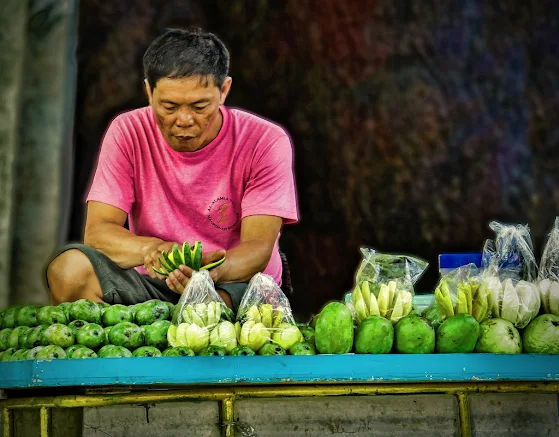What Makes Mango the National Fruit of the Philippines
The Philippines is blessed not only with natural beauty like stunning scenery, white sand beaches, hospitable people, but the country is also home to tasty tropical fruits and one of which is the fruit favorite by many, the mango fruit.
Different Varieties
There are different varieties of mango in the Philippines like Indian mango, carabao mango, senorita mango, and many others. Among the varieties, the Carabao is the most favorite for its sweet, fleshy, and aromatic. In fact, this variety is exported to different countries around the world like Japan.
Different Recipes
Among the tropical fruits in the Philippines, there are several recipes that can be made from mango either ripe or raw.
Eaten Raw
Raw, green mango is perfect if eaten with table salt, fermented small fish (bagoong in Filipino), or fermented small shrimp (hipon in Filipino)
Raw mango fruits are favorite not only by Filipino women but also by men. Raw mangoes are sold at P20 to P50 pesos each depending on the size, quality, variety, and of course the vendors.
Mango vendors roam around the community. Usually, the variety sold by these vendors is Indian. The vendors are the ones who would peel and slice the mango. Table salt, fermented small fish, or shrimp are given by the vendors for free.
Mango Shake
Another mouth-watering mango recipe is the mango shake. This recipe is perfect for the country's hot months of March to May.
Mango Juice
A thirst quencher is mango juice. Mango juice is available commercially in the Philippines either in tetra packs or in cans.
Mango and Puto Maya or Suman
Ripe mango is also best eaten if paired with either Puto Maya or Suman, two of the most delicious native delicacies of the Filipinos.
Dried Mango
Sliced, dried mango is also favorite among Filipinos. Dried mangoes are not widely consumed locally, but are exported to other countries.
Mango Ice Cream
Its delicious taste is also found in ice cream. Ice cream makers in the Philippines have added mango to their flavor. This is to give ice cream lovers a variety of flavors. So if you don't have an appetite for mango fruit, you can still taste it in your favorite mango ice cream flavor.
Demand
Demand for mangoes increases during big celebrations like Christmas and New Year, and other national celebrations. Mango won’t become a national fruit in the Philippines for nothing. Of course, Filipinos love to eat mangoes not just during big celebrations but all year round.
Prices
Prices of mango fruits in the Philippines vary depending on several factors such as supply and demand, quality, and vendors. In the Philippines, prices of ripe mango can be as high as P120.00 pesos to as low as P40.00 pesos per kilogram depending on the factors mentioned above.
Mango Capital
Mango trees are grown all over the country either by large plantations or on small farms. In the Philippines, there are a lot of mango-producing provinces most notably in Guimaras Island and Cebu. Mangoes are also grown in the provinces of Luzon and Mindanao.
But the province of Guimaras is hailed as the Mango capital in the country because of the export-quality mango fruits produced from this province. Mango fruits produced from this province are very sweet, fleshy, and aromatic.
The mangoes not only provide the Filipinos with sweet, fleshy fruits but also help Filipino families economically. In the Philippines, mango growing has been a great help to small mango growers. Hundreds of thousands of Filipino families depend on mango production.
Image: (raw mango) Wayne S.Grazio/Flickr
Image: (mango) Lemuel Cantos/Flickr
Trivia:
The answer to the question, " What is the complete name of Dr. Jose Rizal?" Jose Protacio Rizal Mercado Y Alonso Realonda




